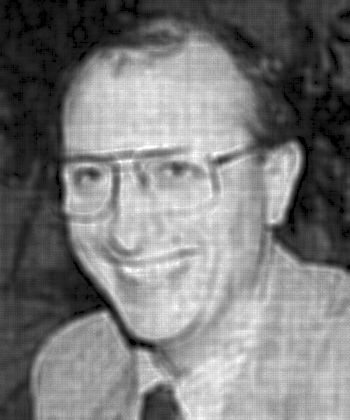


IUCr Congress
Synchrotron Radiation Satellite
 J. Helliwell, Editor in Chief of the IUCr Journal of Synchrotron Radiation.
J. Helliwell, Editor in Chief of the IUCr Journal of Synchrotron Radiation.
The Inst. of High-Energy Physics in Beijing (IEPB), the site of the Chinese national synchrotron X-ray facility (BSRF), hosted a satellite meeting on Synchrotron Radiation in Crystallography. The program was coordinated by the IUCr Comm. on Synchrotron Radiation in association with D. Xian, Chairman of the Synchrotron Radiation Committee of BEPCNL. Topics included sources, X-ray optics, detectors, and beamlines, techniques of macromolecular crystallography, high pressure diffraction, powder diffraction, EXAFS, SAS, and topography applied to a wide range of materials. A special lecture was presented by N. Sakabe (Japan) on his Weissenberg camera results, as well as his plans for use of the Laue method at the Photon Factory. A guided tour of the BSRF provided the opportunity for detailed discussions between the local and visiting scientists.
In the scientific sessions, results were described from the BSRF and the ESRF (France) in particular. At ESRF P. Suortti had achieved 1012 photons/s onto a (0.5 mm)2 focal spot at 70 keV with his new monochromator, on beamline 2 of Å. Kvick. At the other end of the X-ray range for crystallography, H. Stuhrmann (Germany) reported on anomalous scattering measurements from a lysozyme single crystal at a wavelength of 5.0 Å on DORIS, in a collaboration with M. Lehmann (France). Time-resolved and perturbation results figured prominently with studies of enzymes, proteins, and other crystals studied by Laue and monochromatic methods [B. Sweet (USA), J. Helliwell (UK), H. Quan (UK), and H. Graafsma (France)]. The high pressure session included results obtained up to 1.1 Mbar reported by G. Will (Germany), and the identification of new phases of InSb and Si in monochromatic studies with an Image Plate (IP) by D. Allan (UK). The BSRF high pressure facility was described by C. Rongzheng (PRC) and commissioning results reported on CsCl with a pressure cell capable of reaching 100 kbar. A large-volume press was described by S. Clark for the new wiggler beamline at Daresbury. Industrial materials studies were reported, for example, by H. Iwasaki (Japan) involving a new texture method utilizing an image plate to look at Al and Si sheets and by A. N. Shmakov (Novosibirsk) who used powder diffraction with a carefully chosen wavelength near to the FeK edge to investigate Fe2O3. Papers based on contributions will be published in the first issues of the J. of Synchrotron Radiation.
JR. HelliwellU. Manchester, UK


